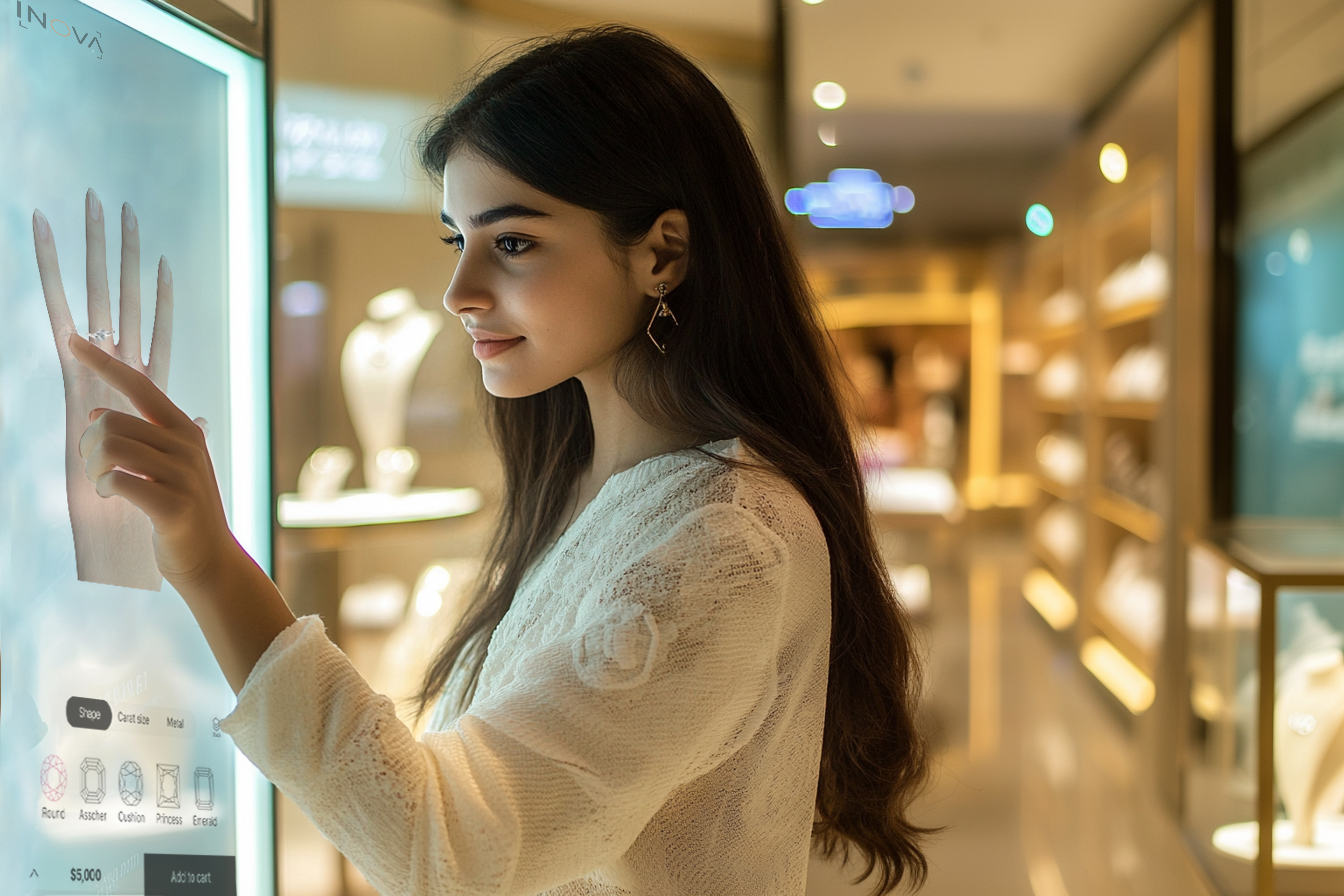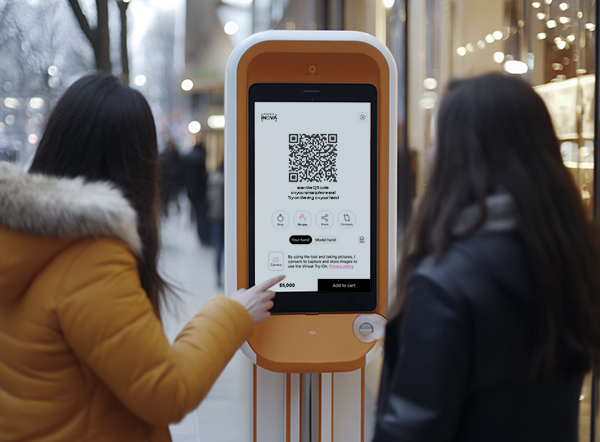The Value of Self-Service Kiosks with Artificial Intelligence in Physical Stores
The Value of Self-Service Kiosks with Artificial Intelligence in Physical Stores
Consumer habits have shifted significantly in recent years, and businesses have embraced new shopping trends. Self-service kiosks simplify the purchasing process for both you and your customers, providing a unique, high-value experience. With AR (Virtual Try-On), RTR (Real-Time Rendering), and AI-driven customization, you can elevate the customer experience and boost profits, especially in the jewelry industry.

AI-powered self-service technology is the next level of customer experience.
AI-powered self-service technology allows customers to shop independently, without needing in-store staff. Today’s tech-savvy generation seeks quick and easy access to products, and self-service options are becoming increasingly popular in retail, restaurants (like McDonald’s and KFC), public information centers, hospitals, and more.
Let’s get down to the nitty-gritty, how can you use self-service kiosks in physical jewelry stores to enhance the customer experience? By integrating AR and RTR technologies.
One of the key benefits of kiosks is their flexibility—they can be placed wherever you need them.
Where should you place your self-service kiosk, and what experience will AI offer your customers?
Inside the store: When a customer visits your store and wants to try on jewelry, even items that aren’t in stock, they can do so through the kiosk using augmented reality (AR). They can choose to use a 3D model hand to “try on” rings, bracelets, or watches, or scan a QR code on their smartphone. The QR code allows them to upload a picture of their hand, which is instantly processed and displayed on the kiosk screen, enabling a virtual fitting using AR. An additional benefit of an in-store kiosk is that customers can shop without needing assistance from staff. The kiosk also supports secure payment options, giving customers confidence in using their credit cards.
Outside the store, near the window: A kiosk placed outside offers a major advantage, especially after hours. When the store is closed, customers can still browse, virtually try on, and purchase jewelry at their convenience. The AI system offers jewelry customization and generates high-quality RTR renders, providing a 360-degree 3D view of your jewelry collection, organized into categories for easy navigation and selection.
Mobile kiosks and cloud-based sales points: In this scenario, the self-service kiosk can be mobile and placed at events, exhibitions, and shopping centers. This allows you to reach a broader range of potential customers who might not otherwise visit your store. One of the benefits of cloud-based sales points is the ability to access real-time data. Business owners can monitor sales data, inventory, and customer interactions from anywhere at any time. AI algorithms can analyze data to provide personalized recommendations and offers, leading to higher customer engagement and conversion rates. This, in turn, drives increased revenue. Kiosk stations bring your business closer to your target audience, often resulting in improved sales.

This technology represents the future of retail, revolutionizing how customers shop and interact with products. As more businesses adopt these innovations, they’ll enhance engagement and drive higher sales. This is the next big step in the evolution of physical retail stores.
